5 Strategies To Successfully Advertise In Local Audio
Click here to view an 8-minute video of the key findings.
With the shift of TV audiences to advertising-free video platforms, local advertisers are turning to audio to build their brands and drive sales.
Here are five strategies to help build a successful local audio plan:
1. Allocate the budget to align with how people use audio
Edison Research’s “Share of Ear” is the gold standard audio time use study. Here is their latest reading on how Americans spend their time with ad-supported audio:
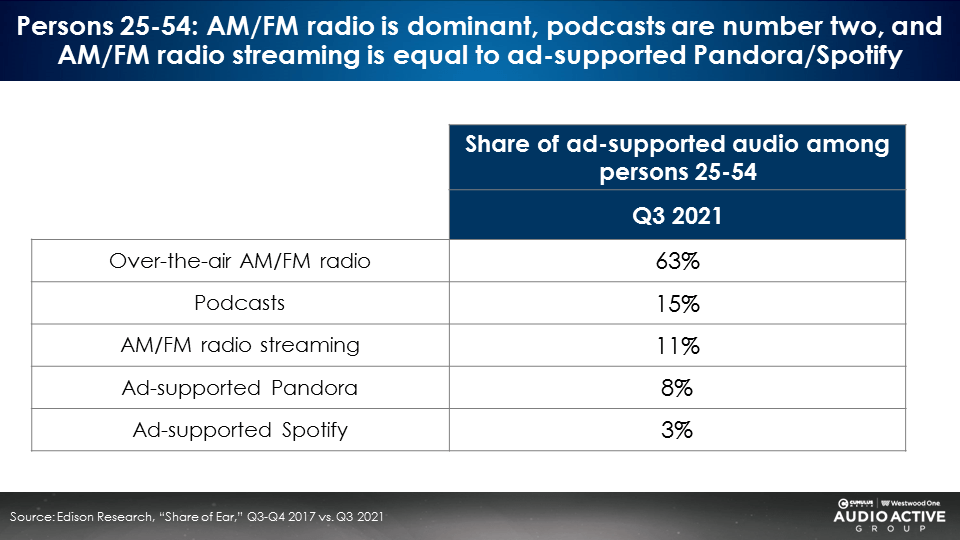
A well-balanced audio campaign puts 63% of the budget into over-the-air AM/FM radio and 11% into AM/FM radio streaming. AM/FM radio streaming by itself is as big as Pandora and Spotify combined.
26% of the budget goes to a combination of pureplay streaming and podcasts. You can target ads just to consumers who live in the local market. The Cumulus sales team can ensure digital audio ads are geo-targeted.
2. Determine the monthly campaign objective (minimum, maintenance, high impact, or launch/grand opening) and budget accordingly
Is the goal to keep the brand name out there? A seasonal sales event? Or, a major push for the grand opening of a new location? Use the planning grid below to determine the appropriate monthly media weight for the campaign.
To determine the monthly budget, multiply the market cost per point against the GRP levels. In a market with a $10 cost per point, the minimum monthly campaign would be $2,000. The grand opening campaign would be $5,000 per month.
In a market with a $30 cost per point, a monthly maintenance campaign would be $9,000. A major launch campaign would be $15,000 per month.
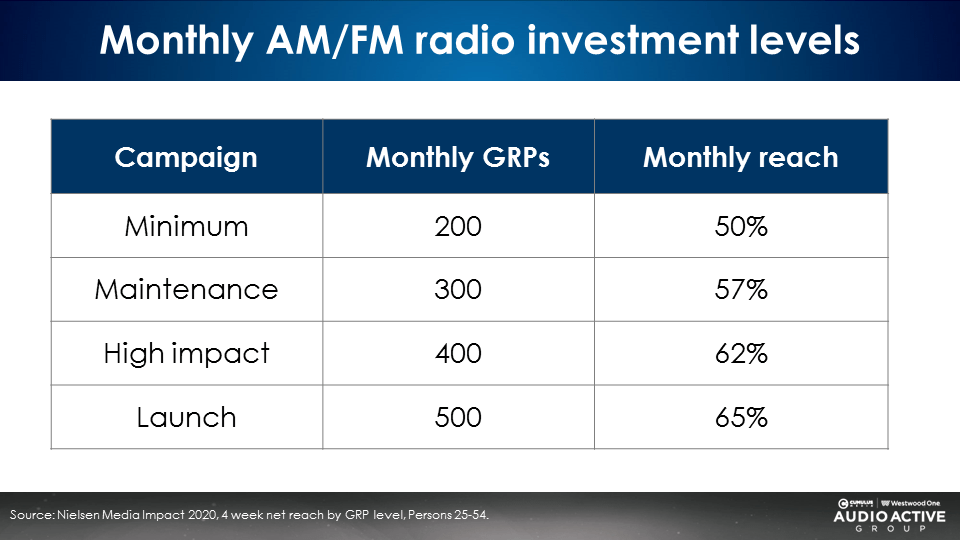
3. Align impressions and media weight with listening by time period to get the largest possible campaign reach
One of the biggest media myths is that audio is a “drive time medium.” Per Nielsen, 60% of AM/FM radio listening occurs outside of morning and afternoon drive. Spread media weight across all days and dayparts.
About a quarter of media weight should run in middays. Place 20% of the budget respectively into weekends, mornings, and afternoons. 8% goes to nights and 5% to overnights.
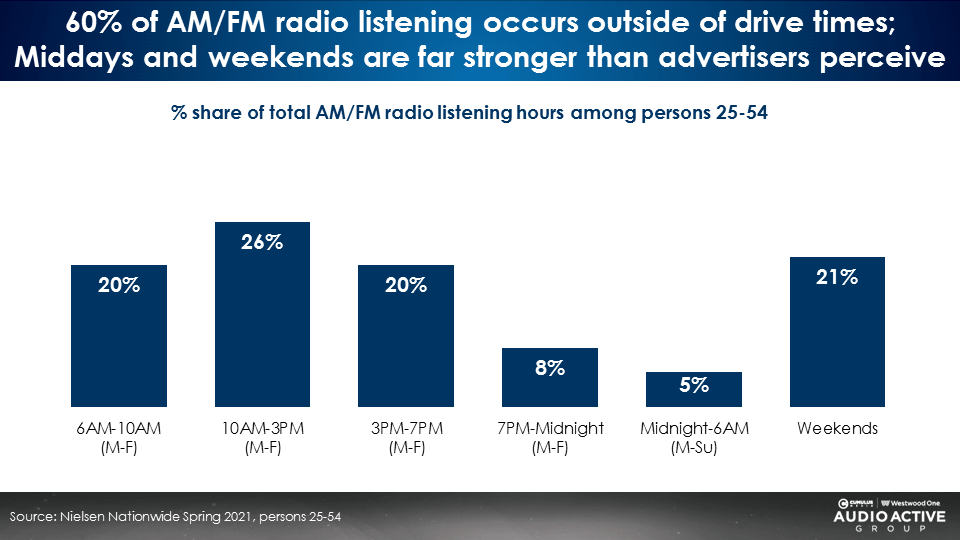
Running in all days and dayparts grows reach, the “foundation of media effectiveness”
The marketing strategy book How Not To Plan: 66 Ways to Screw It Up from Les Binet and Sarah Carter offers these recommendations:
- “Always aim to get more customers from all segments of the market. It’s the main way brands grow.
- Talk to everyone who buys your category. Talk to them regularly. Advertising memories fade.
- Go for reach, rather than frequency. Reach as many category buyers as possible.
- Don’t target too narrowly. It may be efficient, but it’s rarely effective. Tight targeting means low sales and profits.”
4. Find the right audience with AM/FM radio programming formats
While the audience composition of TV shows can vary widely, AM/FM radio station programming formats are very cohesive, appealing to the same audience around the clock.
Find the AM/FM radio programming formats that match your target. The chart below, ranked by median age, depicts total reach, gender skew, presence of children, and household size.
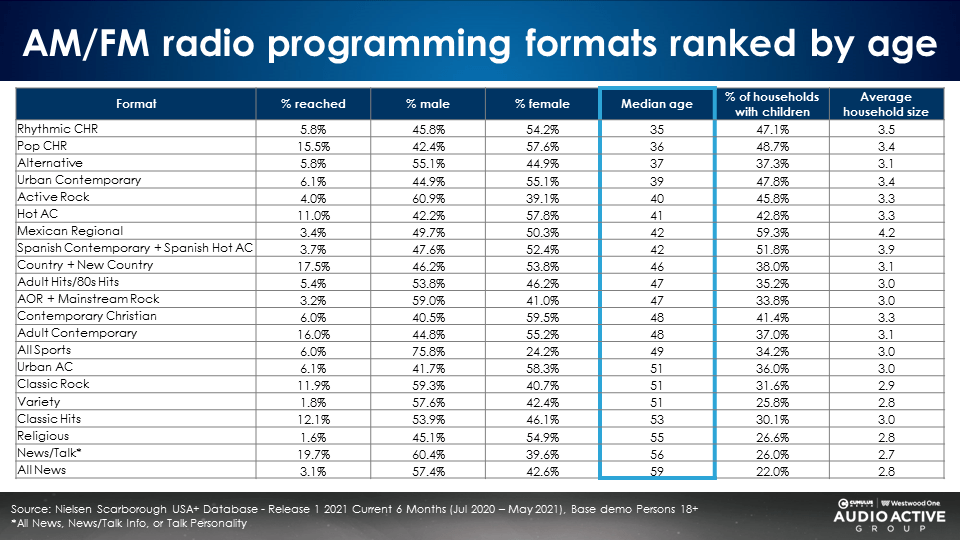
5. Based on the marketing objective, determine the weekly number of ads to run on a station from four types of schedules (very light, light, medium, or heavy)
Here are the four types of weekly schedules:
- The very light station schedule reaches one-third of a station’s audience an average of 1.4 times.
- The light schedule reaches half of a station’s audience two times.
- The medium schedule reaches two-thirds of a station’s audience three times.
- The heavy schedule reaches 78% of a station’s audience 4.3 times. Industry veterans call this an “optimum effective schedule” (OES), which was created by legendary consultant Steve Marx. The heavy schedule is perfect for a grand opening, huge sales event, or a major product launch.
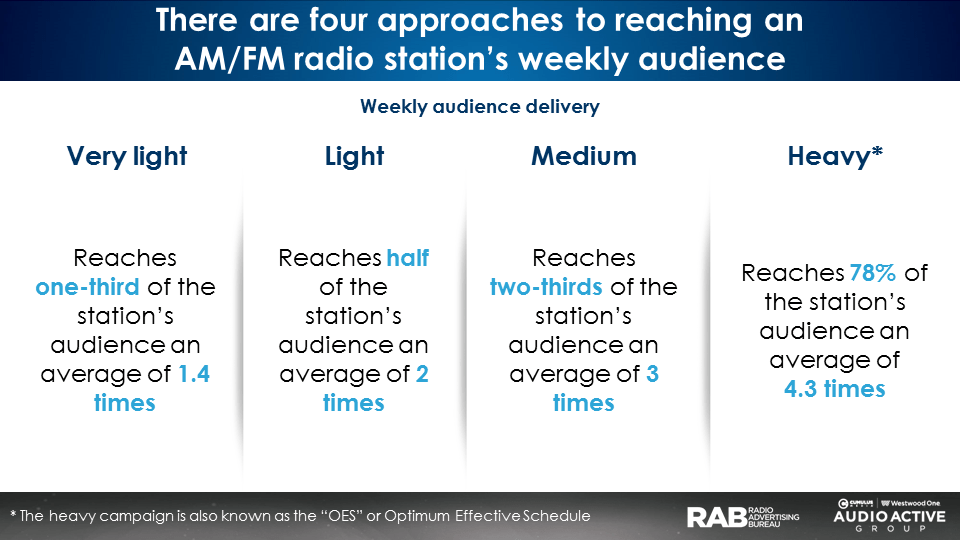
Use this guide to determine the number of weekly ads needed for the four types of campaigns. The number of ads needed per week differs depending on the programming format. Run the ads across all days and dayparts.
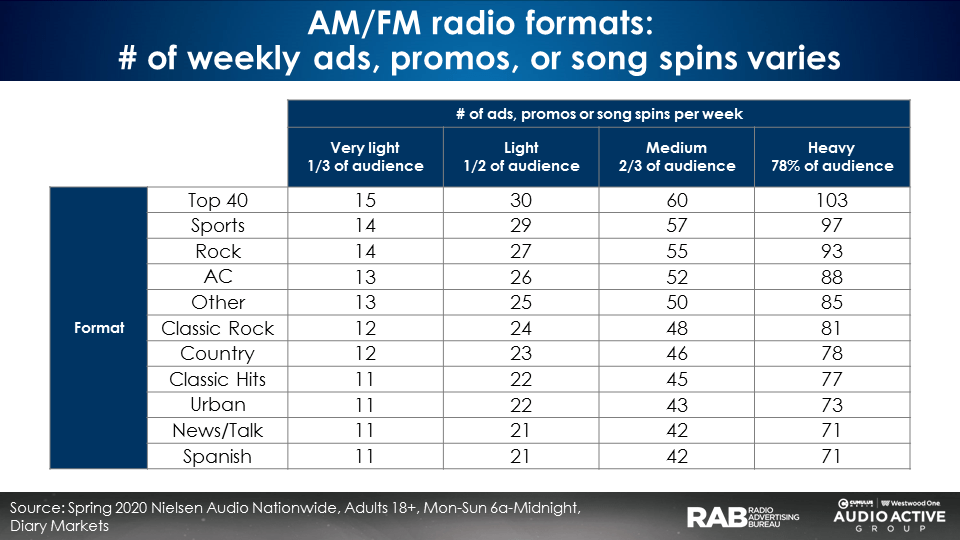
These five local audio planning strategies can help accomplish your objectives. The last and most important step is to ensure creative is effective and powerful using the CUMULUS MEDIA | Westwood One Audio Active Group’s Audio Creative Best Practices.
Five strategies for a successful local audio plan:
- Allocate the budget to align with how people use audio
- Determine the monthly campaign objective (minimum, maintenance, high impact, or launch/grand opening) and budget accordingly
- Align impressions and media weight with listening by time period to get the largest possible campaign reach
- Find the right audience with AM/FM radio programming formats
- Based on the marketing objective, determine the weekly number of ads to run on a station from four schedules (very light, light, medium, or heavy)
Click here to view an 8-minute video of the key findings.
Pierre Bouvard is Chief Insights Officer at CUMULUS MEDIA | Westwood One and President of the CUMULUS MEDIA | Westwood One Audio Active Group.
Contact the Insights team at CorpMarketing@westwoodone.com.